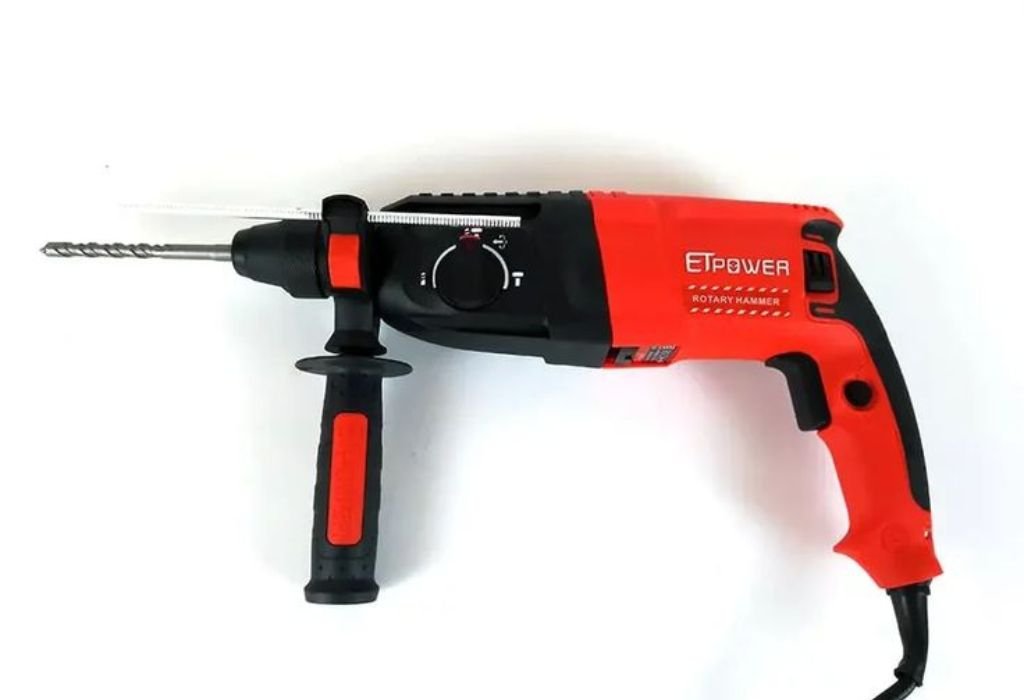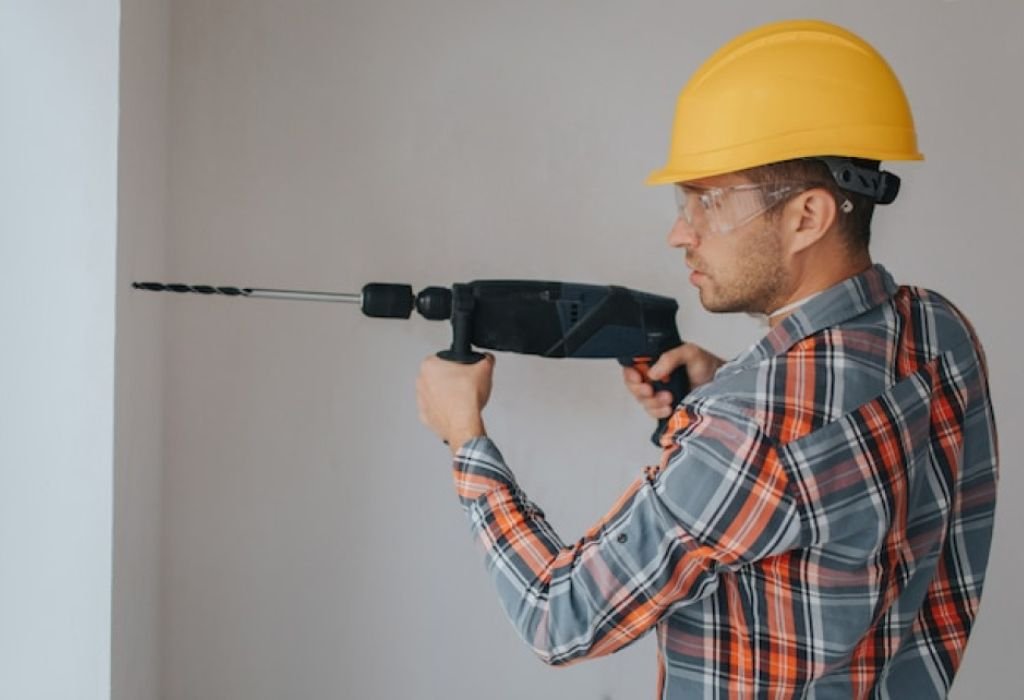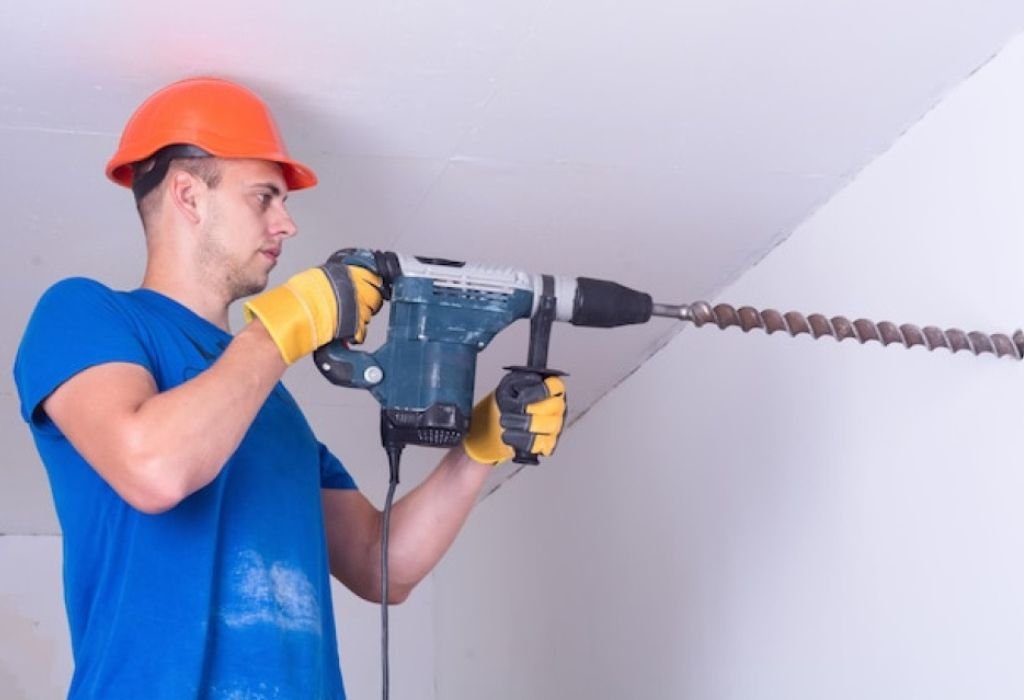A last-minute anchor hole turns urgent, and the toolbox only holds regular twist bits.
The question becomes unavoidable: can i use regular bits in an sts rotary hammer without ruining the tool or the project.
Rotary hammers use SDS chucks designed for slotted shanks that slide and lock under impact.
Standard bits use straight shanks that rely on three jaws and friction to hold.
SDS-Plus and SDS-Max are not interchangeable, and their shanks measure about 10 mm and 18 mm respectively.
That size difference explains why the wrong bit will not seat correctly in the wrong chuck. careytools.com+1
Most SDS chucks accept only SDS bits unless an SDS-to-chuck adapter is installed.
Adapters let the tool spin regular bits, but hammering with them risks slippage, runout, and damage. The Spruce+1
This guide shows when the adapter workaround is acceptable and when it becomes a liability.
It also explains safer techniques, performance tradeoffs, and the smartest buy or rent choices for masonry.
Readers will see how to set rotation-only mode for wood and metal. They will also learn why concrete still demands SDS masonry bits for speed and safety.
Clear, practical steps reduce downtime and protect the chuck, bit, and user. The finish is clean holes, intact tools, and fewer surprises on the job.
SDS (STS) Systems Explained and Why Fit Matters

Rotary hammers use the SDS system, also known as STS, to transfer impact energy efficiently. Instead of jaws gripping the bit, SDS chucks hold it with slots that allow axial movement.
This design lets the bit move back and forth under the piston’s force. That floating motion is what makes SDS so effective in concrete and masonry.
What does SDS mean and how does it differ from a standard chuck?
SDS means Slotted Drive System, and it secures bits without friction jaws.
Are SDS-Plus and SDS-Max bits interchangeable?
No, they differ in size and power rating, so they cannot be swapped.
Why do SDS bits ‘float’ in the chuck?
The floating shank absorbs and transfers piston-driven energy efficiently.
Is “STS” the same as SDS?
Yes, some brands list STS, but it refers to the same mechanism.
Does shank size affect impact transfer?
Yes, larger shanks like SDS-Max deliver more stability and impact.
The Core Question — can i use regular bits in an sts rotary hammer
Regular bits can sometimes be used with an adapter, but not in hammering mode. Rotary hammers are built for SDS masonry bits, and straight-shank bits are not designed for impact.
Adapters allow basic drilling in wood, metal, or plastic. However, hammering with regular bits risks slippage, overheating, and chuck damage.
Can a rotary hammer hold regular drill bits?
Yes, but only with an SDS-to-chuck adapter.
Is it safe to use regular bits in hammering mode?
No, hammer mode damages both the bit and the chuck.
When is this workaround acceptable?
It is acceptable only for rotation-only tasks in softer materials.
Will performance suffer compared with SDS bits?
Yes, drilling speed and accuracy drop significantly.
Does the warranty or manual restrict this?
Yes, many tool makers advise against non-SDS use in hammer mode.
Adapters, Chucks, and What They Can Do
An SDS-to-chuck adapter lets you use regular straight-shank bits. It acts as a secondary chuck that locks into the SDS system.
While convenient, adapters introduce extra length and runout. This makes precision drilling harder and increases wear on the tool.
Which adapter lets a rotary hammer use straight-shank bits?
An SDS-to-keyless or SDS-to-keyed chuck adapter.
Does an adapter allow hammering masonry with regular bits?
No, it should only be used in rotation-only mode.
What materials are fine with regular bits on a rotary hammer?
Wood, metal, and plastic are acceptable with adapters.
How much runout does an adapter add?
Adapters increase wobble, making holes less precise.
Will the setup get heavier or harder to control?
Yes, added weight affects balance and control.
Performance Reality — Speed, Wear, and Control
Regular bits wear faster when used with rotary hammers. Heat buildup and vibration cause faster dulling and potential breakage.
SDS bits are engineered for durability in concrete, while regular bits are not. Using the wrong type reduces efficiency and risks tool damage.
Will progress be slower with regular bits?
Yes, drilling speed is reduced compared with SDS bits.
Do regular bits dull faster in masonry?
Yes, they overheat and lose sharpness quickly.
Is vibration worse with the wrong bit and chuck combo?
Yes, extra vibration transfers to the operator.
Does the clutch help if a bit binds?
Yes, but it cannot prevent all risks.
Are SDS masonry bits still required for concrete?
Yes, only SDS bits can handle concrete effectively.
Safety and Risk Management

Using regular bits in rotary hammers raises safety concerns. Bits may slip, bind, or even break under hammering loads.
Operators risk injury from kickback and flying fragments. Always use proper protective gear and rotation-only mode.
Can a regular bit slip out of an SDS adapter under load?
Yes, slippage is common with high torque.
What happens if hammer mode is left on with a regular bit?
The chuck and bit can both be damaged.
Which PPE is recommended?
Safety glasses, gloves, ear plugs, and dust masks.
How to reduce kickback risk?
Maintain a firm grip and use the side handle.
When to stop and change tools?
Stop if bits overheat, bind, or wobble excessively.
Best-Use Scenarios for Regular Bits on a Rotary Hammer
Regular bits can still be useful for light-duty drilling. With an adapter, they perform well in wood, metal, and plastic.
They also work for accessories like mixing paddles or hole saws. Rotation-only mode must always be selected.
What tasks suit regular twist bits on a rotary hammer?
Pilot holes in wood or sheet metal.
Should speed be reduced to control heat?
Yes, lower RPM prevents overheating.
Is lubrication helpful in metal drilling?
Yes, cutting oil improves results.
How deep should holes be with this setup?
Shallow holes are safer and more accurate.
How often should pauses be taken?
Every few minutes to allow cooling.
When Only SDS Bits Make Sense
For masonry, concrete, and stone, SDS bits are mandatory. Their carbide tips and slot design handle impact without breaking.
Larger jobs may require SDS-Max tools for hole diameters above 1 inch. Reinforced concrete is another case where regular bits are useless.
Which materials require SDS masonry bits?
Concrete, stone, and brick.
What hole sizes push you to SDS-Max?
Holes above 1 inch diameter.
Do SDS bits reduce slippage and breakage?
Yes, the locking design prevents movement.
Is a hammer drill the same as a rotary hammer?
No, hammer drills vibrate while rotary hammers use a piston.
Does anti-vibration tech matter?
Yes, it reduces operator fatigue in long sessions.
Step-by-Step Setup if You Must Use Regular Bits
If using regular bits, proper setup is essential. Install the SDS-to-chuck adapter and insert the bit securely.
Switch the tool to rotation-only mode and use slower speeds. Always test for wobble before starting work.
How to install an adapter and chuck correctly?
Slide the adapter into the SDS chuck, then tighten the bit.
Which mode to select on the rotary hammer?
Rotation-only mode.
What RPM is safer for metal and wood?
Use lower RPM to control heat.
How to check for excessive runout?
Spin the bit before drilling to test alignment.
When to abandon the setup mid-task?
Stop if bits wobble or fail to cut cleanly.
Cost–Benefit and Tool Longevity

Adapters save money in the short term but increase tool wear. SDS masonry bits protect both the bit and the rotary hammer.
For major projects, renting or buying proper SDS gear is the smarter investment. Long-term, this reduces downtime and replacement costs.
Is renting a rotary hammer worth it for a few anchors?
Yes, it is often cheaper and safer.
Will using regular bits void warranties?
Yes, many warranties exclude misuse.
Does an adapter affect balance and fatigue?
Yes, extra weight strains the user.
What hidden costs arise from doing it the hard way?
Broken bits and wasted time.
How to decide buy vs rent?
Base it on project size and frequency.
Quick Comparison Table
| Feature | Regular Bits via Adapter | SDS Bits |
| Fit & Retention | Friction, less secure | Locking slots |
| Mode Allowed | Rotation only | Hammer + Rotation |
| Suitable Materials | Wood, metal, plastic | Masonry, stone, concrete |
| Drilling Speed | Slow | Fast |
| Wear & Heat | High | Low |
| Risk Level | Medium to High | Low |
| Cost Efficiency | Short-term cheap | Long-term better |
Conclusion
The answer to can i use regular bits in an sts rotary hammer depends on the task. With an adapter in rotation-only mode, regular bits can handle light-duty jobs in wood and metal.
However, for concrete, stone, or masonry, SDS bits are the only safe and effective option. They protect the tool, the bit, and the user.
When in doubt, rent or invest in SDS-compatible masonry bits. Using the right bit ensures safety, efficiency, and professional results every time.

I’m John F. Nicholas, the founder, lead writer, and drill enthusiast behind 101drill.com. With years of hands-on experience in power tools and DIY projects, I created this platform to share practical knowledge, expert tips, and real-world insights to help others master the art of drilling.
